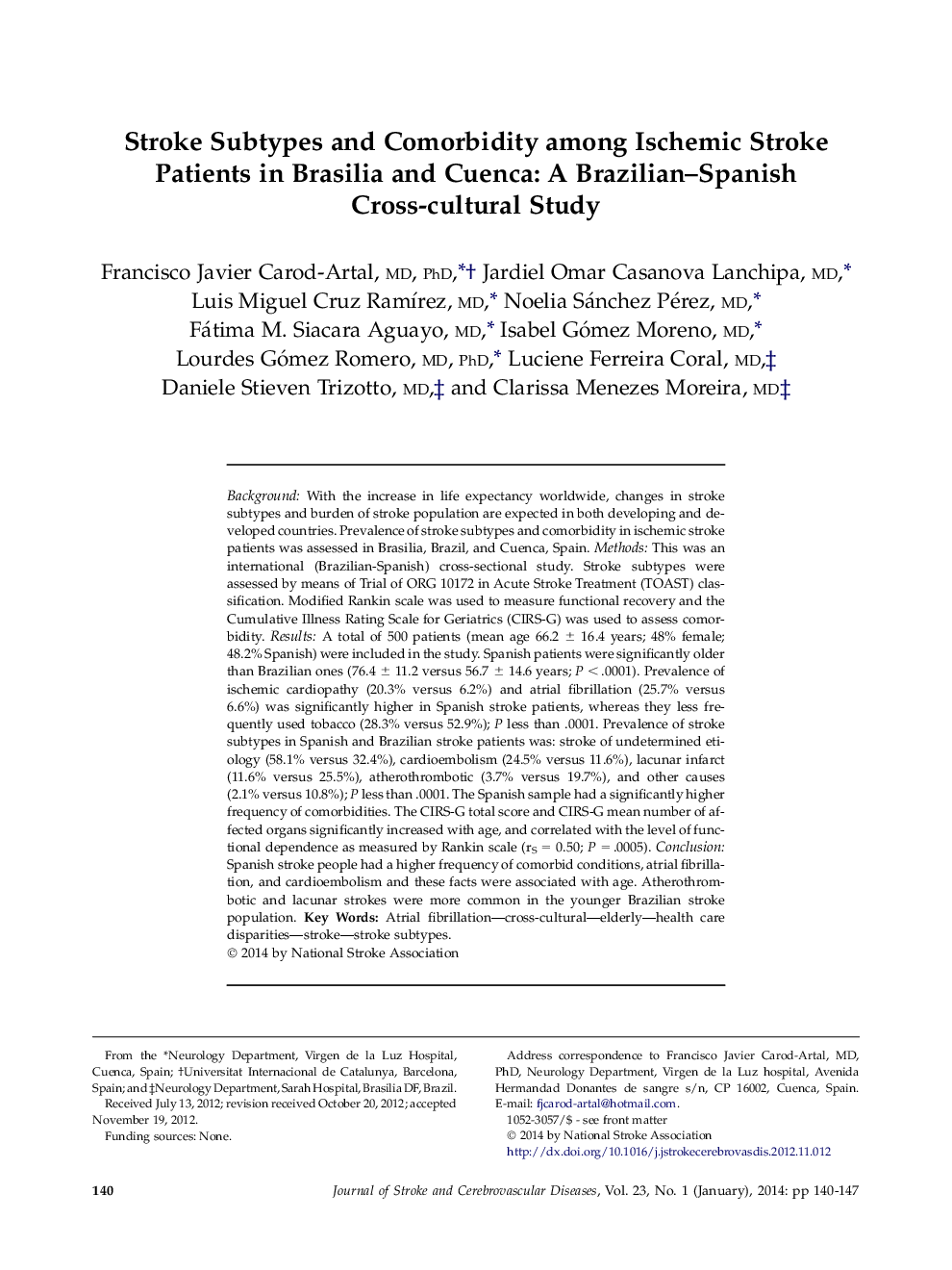| کد مقاله | کد نشریه | سال انتشار | مقاله انگلیسی | نسخه تمام متن |
|---|---|---|---|---|
| 2706149 | 1144797 | 2014 | 8 صفحه PDF | دانلود رایگان |
BackgroundWith the increase in life expectancy worldwide, changes in stroke subtypes and burden of stroke population are expected in both developing and developed countries. Prevalence of stroke subtypes and comorbidity in ischemic stroke patients was assessed in Brasilia, Brazil, and Cuenca, Spain.MethodsThis was an international (Brazilian-Spanish) cross-sectional study. Stroke subtypes were assessed by means of Trial of ORG 10172 in Acute Stroke Treatment (TOAST) classification. Modified Rankin scale was used to measure functional recovery and the Cumulative Illness Rating Scale for Geriatrics (CIRS-G) was used to assess comorbidity.ResultsA total of 500 patients (mean age 66.2 ± 16.4 years; 48% female; 48.2% Spanish) were included in the study. Spanish patients were significantly older than Brazilian ones (76.4 ± 11.2 versus 56.7 ± 14.6 years; P < .0001). Prevalence of ischemic cardiopathy (20.3% versus 6.2%) and atrial fibrillation (25.7% versus 6.6%) was significantly higher in Spanish stroke patients, whereas they less frequently used tobacco (28.3% versus 52.9%); P less than .0001. Prevalence of stroke subtypes in Spanish and Brazilian stroke patients was: stroke of undetermined etiology (58.1% versus 32.4%), cardioembolism (24.5% versus 11.6%), lacunar infarct (11.6% versus 25.5%), atherothrombotic (3.7% versus 19.7%), and other causes (2.1% versus 10.8%); P less than .0001. The Spanish sample had a significantly higher frequency of comorbidities. The CIRS-G total score and CIRS-G mean number of affected organs significantly increased with age, and correlated with the level of functional dependence as measured by Rankin scale (rS = 0.50; P = .0005).ConclusionSpanish stroke people had a higher frequency of comorbid conditions, atrial fibrillation, and cardioembolism and these facts were associated with age. Atherothrombotic and lacunar strokes were more common in the younger Brazilian stroke population.
Journal: Journal of Stroke and Cerebrovascular Diseases - Volume 23, Issue 1, January 2014, Pages 140–147
